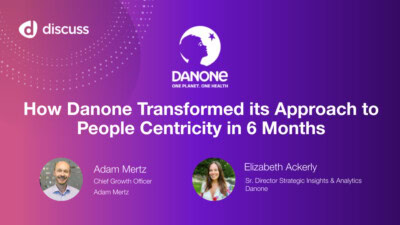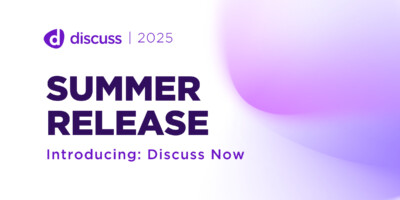How to Build a Business Case for Investing in Qualitative Research Software, Part 1

Whether you’re part of a consulting organization, agency, or in-house team looking to talk with customers and prospects to better understand their perspectives, interests, reactions to or usage of your products, you likely already understand the value that in-depth customer insights offers your company. However, as we head into the budgeting season what may be on the minds of many is how to effectively justify the allocation of budget dollars (or more budget dollars) towards technology that can help drive better insights faster.
In fact, the business-level impact of understanding customer needs and empathizing with their challenges has been written about extensively over the last several years. Oftentimes, though, this impact is at too high of a level for actual justification of spend on a qualitative research tech platform. Our own co-founder discussed how customer-centric companies are 60% more profitable compared to companies that are not focused on the customer in a Forbes article earlier in the year. In Entrepreneur Magazine last month, our CEO talked about how customer experience (CX) now outweighs the importance of price and product quality, according to 73% of consumers. These are great stats but just too hard to use for budget-related justification of spend.
If everybody knows how critical it is – how empathy can unlock innovation, better marketing, and customer satisfaction – why can it be so hard to get your organization to make a significant investment and commitment to tools that drive better insights? Many would argue that it all comes down to building a solid business case. You can’t walk into your CEO, CFO, or any other C-level’s office and just share one of those industry stats and then ask for a large check to buy a qualitative research platform.
You have to go a level deeper. You need to highlight, in as much quantifiable and justifiable detail as possible, the actual return that your team and organization will see from this investment. So to get you started, here is some guidance on how to build a bulletproof business case.
Step One – Determine the Main ROI Areas
Here’s your chance to get specific, with some of these ROI areas possibly being different if you work at an agency vs. on an in-house team. For example, it’s very common for agencies to have project managers to ensure that each and every research project gets done on time and in scope. Sometimes that’s the case for a retailer, CPG, healthcare or tech company, etc. as well, but sometimes it’s not. If you do have people spending time managing these research projects this is definitely an area of quantifiable ROI.
Project management for qualitative research projects can be extensive without the right systems in place. Some examples of tasks that can be automated or eliminated with systems like Discuss include:
- Creating web conferencing meetings, often multiple web conferences, for both respondents and observers
- Sending and managing session invites to all involved from the PM’s email inbox – where they’re managing all of the acceptances and getting their work calendar filled up
- Project manager attendance to every session to ensure smoothness (removing last names to protect respondent PII, ensuring observers don’t type something in the chat, etc.)
- Working with and notifying recruiters to who joined (for incentive follow up)
- Time spent doing tech checks when respondents get on the call
Now the key is to quantify this saving. You have to decide how much time this takes for every session managed, and then multiply that by the total number of sessions you are likely to do in a year.
Example:
If you say that, on average, all of those tasks take up 3 hours of PM time per session (this is what several customers have told us is the time saved per session), and you think you’re going to have 1,000 feedback sessions, that’s 3,000 hours, or 375 working days saved. To quantify the dollar amount, you just need to estimate the salary (per hour) for the PM resource involved and multiply that by the total number of hours. In this case, if you use a salary of $65/hr, it would be $195,000 in productivity savings.
In addition to Project Management time savings being a key ROI area, another one we commonly hear about from our platform users is the ability to create highlight reels. Now again, if you’re a brand that has fully outsourced your qualitative research, then the ROI might not be centered around the creation of highlight reels, but the ROI component could just be owning and having access to all video captured from the live sessions. If you do have people spending time creating highlight reels, and you’re leveraging a platform like Discuss then this would be another big ROI area. The tasks that can be minimized or eliminated include:
- Time spent rewatching and noting times of interesting moments in the videos to save as part of highlight reel creation
- Reaching out to observers to see if they recall any particular interesting moments that should be included in the highlight reel
- Downloading session videos and uploading them into a video editing tool, along with eliminating time spent referring back to notes of different times to clip
- With a drag and drop interface for pulling in those previously saved clips and interesting moments, there’s minimal time spent in actual creation of highlight reels
- Exporting the videos and uploading to a shared storage app prior to sending out that link to key stakeholders can also be eliminated.
Again, the above is only justification for the quantification of the impact. We commonly hear that all of this work amounts to 2-3 hours per session (for an example of this, check out the Bellomy case study in our Resources section). If you use 2 hours per session, multiplying by 1000 sessions, that’s 200 hours or 250 days. And if you use the $65/hr again, that would equate to $130,000 in savings, all while likely producing a better end analysis and report.
In Part 2 of How to Build a Business Case for Investing in Qualitative Research Software, we’ll highlight three more areas that are often strong candidates to include within your business case. Look for that post shortly!
Ready to unlock human-centric market insights?
Related Articles

5 Trends Shaping the Future of Qualitative Insights
By Jim Longo, Co-Founder & Chief Strategy Officer at Discuss Each year, the Greenbook Research Industry Trends (GRIT) Business &…
By Jim Longo, Co-Founder & Chief Strategy Officer at Discuss Each year, the Greenbook Research Industry Trends (GRIT) Business &…

Navigating Tomorrow: A Glimpse into the Future of Market Research in 2024
Author: Jim Longo, Co-founder & Chief Strategy Officer As a veteran with over 30 years in the market research industry,…
Author: Jim Longo, Co-founder & Chief Strategy Officer As a veteran with over 30 years in the market research industry,…

Qualitative Research: Understanding the Goal and Benefits for Effective Analysis
As market trends evolve at lightning speed in the age of digital transformation, having an intimate understanding of consumer desires…
As market trends evolve at lightning speed in the age of digital transformation, having an intimate understanding of consumer desires…



